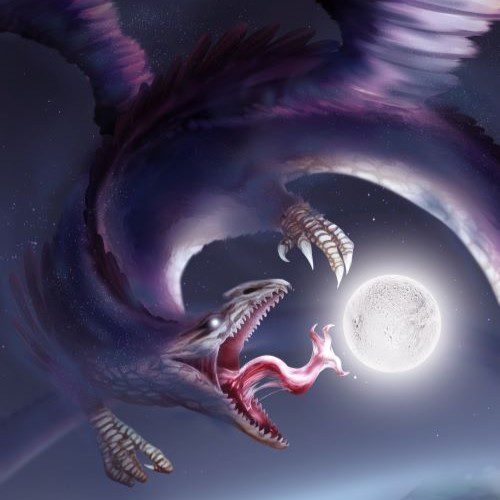Tikbalang : The Philippine Centaur
At a glance
| Description | |
|---|---|
| Origin | Philippine Mythology |
| Classification | Hybrids |
| Family Members | N/A |
| Region | Philippines |
| Associated With | Shapeshifting |
Tikbalang
Introduction
In Philippine mythology, the tikbalang is a half-human and half-horse creature and it’s very similar to the centaur in Greek mythology. It’s believed that a tikbalang would scare away travelers or lead them astray. In order to break free from this, the creature would require the lost individual to turn his clothes inside out. These experiences usually happen in rural and dark areas and especially after sunset.
Tikbalang may have originated from Hayagriva, an avatar of the Hindu god Vishnu, whose worship was first recorded in 2000 BCE. Before the Spanish arrived in the Philippines, there were no horses in the area so the history of a horse shaped creature was not possible. In the pre-colonial period, tikbalang were regarded as spirits of the forests and ghosts and they were also referred to as “multo” and “bibit”. In some versions, it is a transformation of an aborted foetus sent to earth from limbo.
Physical Traits
Contrary to popular belief, the tikbalang is not a centaur. It can be described a being a reverse centaur as the centaur has the body of a horse and the torso and head of a man, the tikbalang has the head of a horse and the body of a human. The tikbalang is a tall, thin creature with a disproportionately long and disproportionately large limbs to the point that its knees reach above its head when it squats down. It has a thick mane and a lighter colour fur.
Some accounts also claim that the eyes of the tikbalang glow like embers and there is some fiery glow associated with it when enraged.
Family
No specific origin stories are attributed to the tikbalang and it is widely believed to due to the introduction of horses into the Philippines by the Spanish and the stories that evolved due to that.
Powers and Abilities
The tikbalang is believed to reside in balete trees. Also known as banyan tree, this tree is somehow feared and associated with enchanted beings and paranormal activities. It is also believed that balete tree contains portals to other realms.
According to traditional folklore, the Tikbalang can also transform itself into human form or turn invisible to humans. In the Philippines, tikbalangs are known to scare travellers by playing tricks on them, which will keep them from returning to the correct path. In addition, they are believed to be guardians of elemental kingdoms and are seen guarding large trees. They say that the only way to be free of a tikbalang’s control is to turn your shirt inside out.
One of the tikbalang’s tricks is to transform its appearance into that of a close friend or relative who might have been in the area when it encountered them. This will make it appear as if it knows how to lead its victims to a place that’s far from their destination. When the time comes the for the tikbalang to reveal itself the victim may experience the smell of tobacco before the face and the body of their guide blurs as it changes from the that of the victim’s, relative or friend, into its own true monstrous form.
Those who have been unlucky enough to encounter a tikbalang are known to wander into villages or towns and talk incoherently. People who tried to help them will often tell their stories of how they were pushed, knocked to the ground and hit repeatedly. All they could do was laugh as they were being tormented by the tikbalang and when eventually they stopped resisting they were left alone.
Modern Day Influence
The tikbalang is a popular character in Philippine movies, television and novels. The stories of the creature are used to educate young children on the culture, mythology, traditions and religion of the ancient Philippines.
The first episode of the 2015 web series “Creatures Of Philippine Mythology” featured the tikbalang and it traced the evolution of this creature from India to the present day. In Arnold Arre’s graphic novel “The Mythology Class,” a tikbalang named Lusyo is featured.
A children’s book about the tikbalang, “Kabilugan ng Buwan,” aims to introduce kids to the mythology of the Philippines. In the story, a Tikbalang becomes very lonely during the full moon due to the lack of a playmate and after leaving its home in the Kalumpang tree, the creature encounters various animals.
Related Images
Frequently Asked Questions
What does the Tikbalang do?
The Tikbalang is known to trouble travellers by tricking them into straying from their path. They are known to mislead people at night along arbitrary paths usually bringing them back to where they started.
Is the Tikbalang evil?
The Tikbalang is an evil entity from Philippine mythology who is half human and half horse. They are known to trouble and attack human beings especially at night.
How do you escape from a Tikbalang?
To escape from attack from a Tikbalang, all you need to do is to turn your shirt inside out. This angers the Tikbalang and makes them leave you alone.
Which is the most popular book on the Tikbalang?
Kabilugan ng Buwan. In the story, a Tikbalang becomes very lonely during the full moon due to the lack of a playmate and after leaving its home in the Kalumpang tree, the creature encounters various animals.















